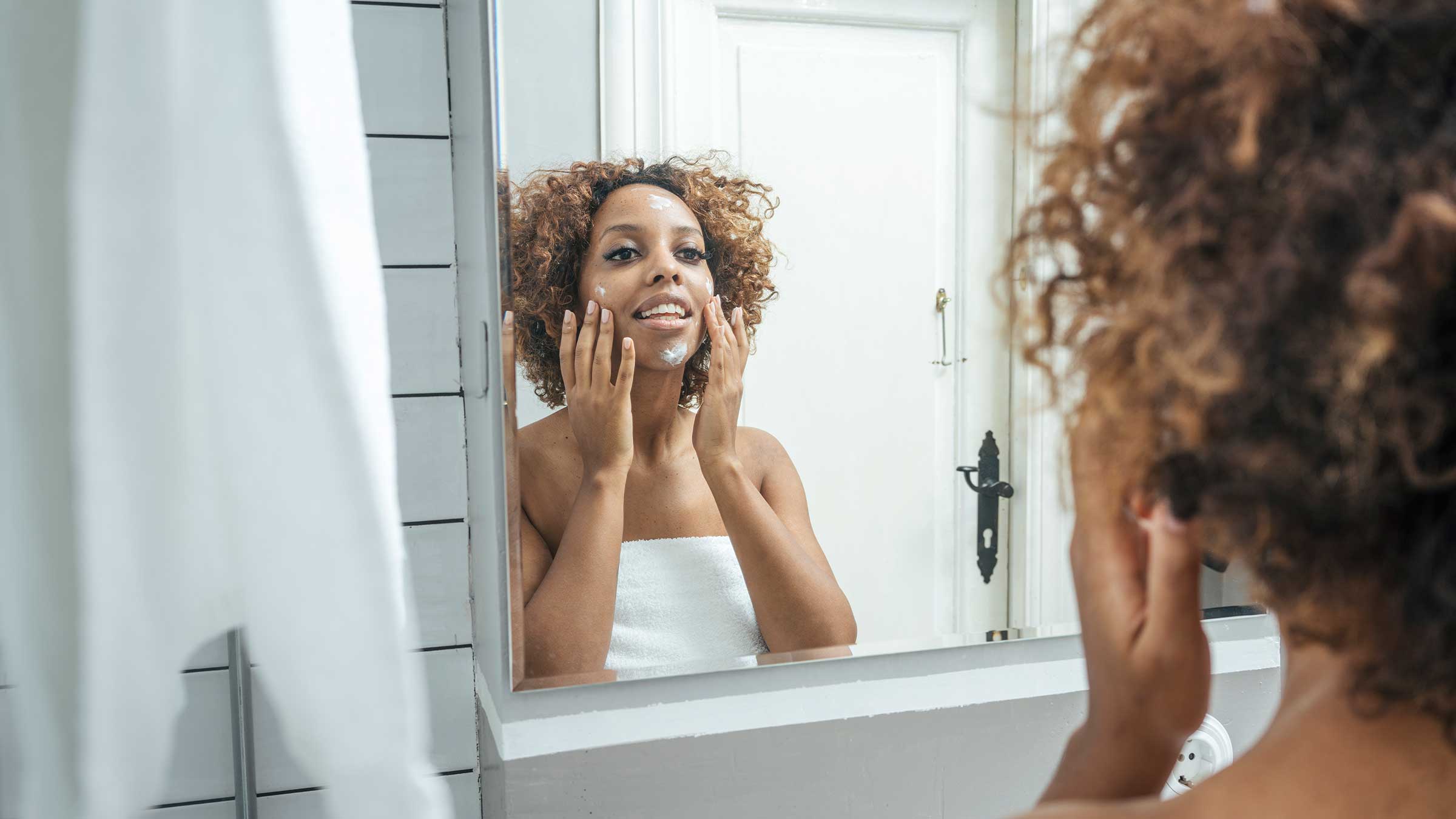
Skin cycling is a skin care regimen that can be followed in a few easy steps and repeated in a three-to-five-night cycle. Dermatologist Dr. Whitney Bowe coined the term “skin cycling” and highlighted this technique as a simple regimen that everyone can follow. This practice, popular on TikTok, is safe, effective and won’t break the bank.
Here’s how to start “skin cycling”:
Start by simplifying the steps in your skin care routine. Choose a gentle facial cleanser, an over-the-counter retinol or prescription strength retinoid, and a moisturizer that best fits your skin type. That’s all you really need to get started on a skin cycling routine.
Night 1: Exfoliate
Cleanse your skin. You can use an exfoliant wash or a gentle cleanser. After you’re done washing, pat dry and then use an exfoliant. Exfoliators remove dirt, debris and dead skin cells.
The most helpful products are the chemical exfoliants. Examples include alpha hydroxy acids, such as glycolic acid, or beta hydroxy acids, such as salicylic acid. Chemical exfoliants can be used as a wash or a leave-on.
Beware that although physical exfoliators such as the Clarisonic brushes were once very popular, they’ve fallen out of favor because they can be irritating and abrasive.
Night 2: Retinoids
Cleanse your skin with a gentle cleanser and dry your skin. Apply a prescription strength retinoid or an over-the-counter retinol, which will increase turnover of skin cells.
Retinoids are a common treatment for acne as well as an anti-aging product. Use sparingly — a small, pea-sized amount will be enough to apply over your entire face. You can also use with moisturizers to avoid irritation if you tend to have dry or sensitive skin.
Pregnant women should avoid retinoids. Instead, stick to a cleansing and moisturizing routine for the duration of your pregnancy.
Nights 3 to 4: Hydrate and moisturize
Cleanse your skin, pat dry, then apply your favorite moisturizer. Hydrating the skin with emollients that contain hyaluronic acid and ceramides can help repair and replenish your skin’s natural barrier.
Hydrate for only one night if you have oily or acne-prone skin.
Hydrate for two or three nights if you have sensitive, dry or easily irritated skin. Hydrating more nights allows for longer repair and recovery.
What types of skin issues or conditions do you think this practice is best suited for?
This can work for any skin type by adjusting the types of products used. For example, stronger retinoids should be used for oily or acne-prone skin. The number of moisturizing nights in each cycle should be increased for a longer recovery for dry or sensitive skin.
As we age, our skin may become more sensitive and less oily, and will need more time to hydrate and moisturize, so it may take longer cycles. If you have acne-prone or oily skin, moisturization is not as critical because you already have enough natural oil or sebum on your skin, so you can opt for shorter cycles.
Is skin cycling safe?
While not all TikTok trends are advisable, skin cycling is safe. One of the biggest mistakes in skin care I see is when people use more products than are necessary or when people use the wrong products for their skin type.
Skin cycling is helpful for people who may be struggling finding a good regimen because they’re using too many products or not giving products adequate time to work.
Simplifying and refining your skin care regimen is a good thing. More is not better, and people are finding that the 12-step programs that were so popular a few years ago were overly complicated and unrealistic to maintain and, in some cases, exacerbated skin conditions with too many products applied all at once without maximizing the benefits of the individual steps. Skin cycling allows time for each step to be effective.
Certain skin conditions may need additional medications.
There are certain skin conditions, such as inflammatory, nodulocystic acne, that would require more consistent, frequent use of topical retinoids versus once every four days. Other skin conditions, such as seborrheic dermatitis, eczema, psoriasis and rosacea, could require additional medications to control symptoms as well.
Other key takeaways
You should talk to a board-certified dermatologist to help you with your skin care needs and guide your skin care regimen.
As a rule of thumb, always use fragrance-free, hypoallergenic and noncomedogenic products.
Remember to use a daily SPF sunscreen as part of your regimen as well.
Skin care regimens don’t have to be complicated or expensive to be safe, effective and easy to follow.

Worried about your skin?
Ohio State's dermatology team provides comprehensive care backed by one of the nation's leading academic health centers.
Expert care starts here




